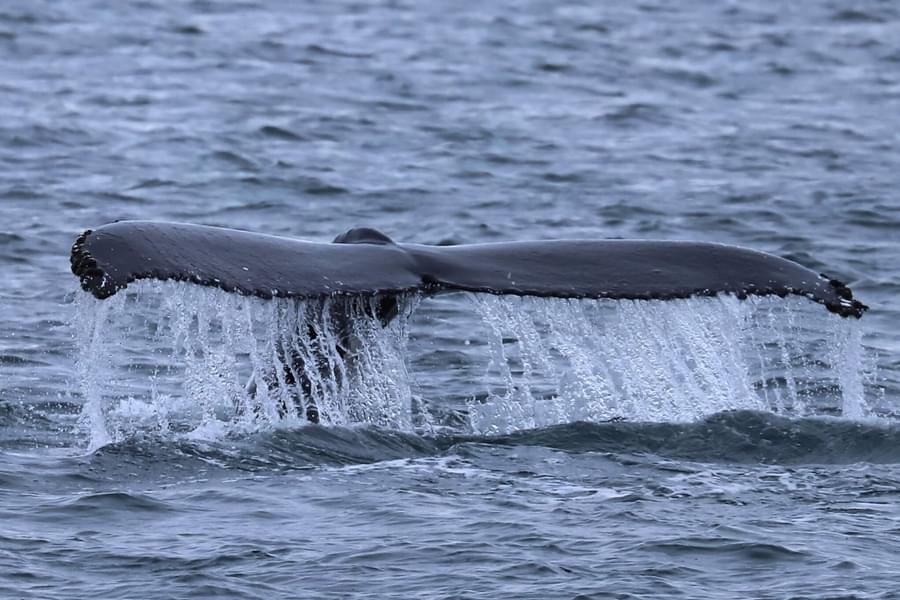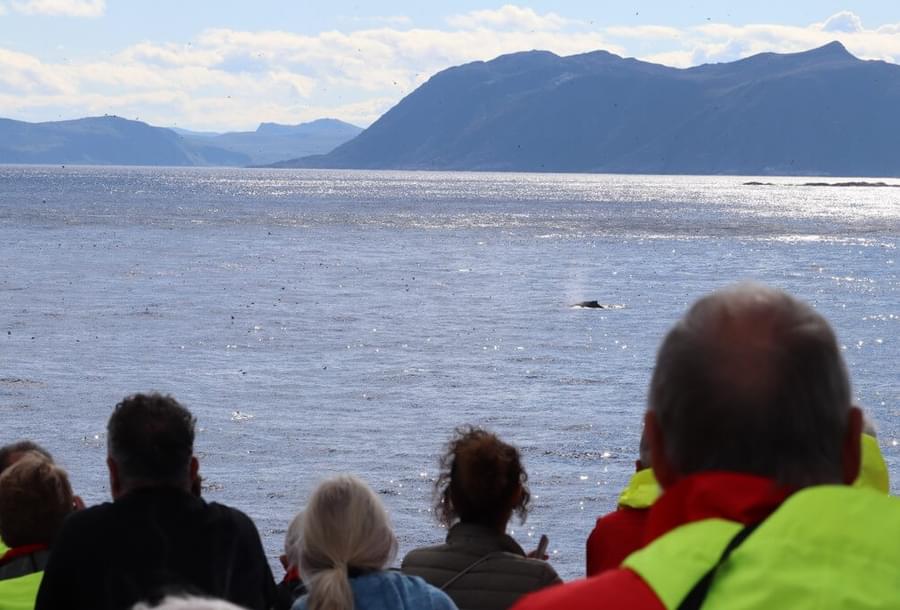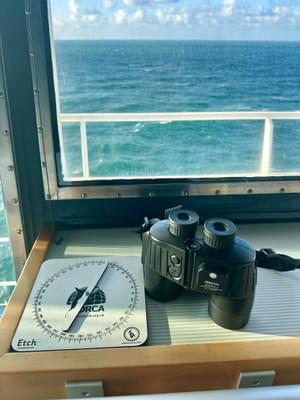Over the course of its lifetime, the average humpback whale will repeat the same migration year after year covering hundreds of thousands of miles in the process. But why exactly do they make such enormous journeys? Ocean Conservationist Taryn investigates these amazing journeys with giants in this week’s blog.
Why do whales migrate?
The onset of summer in the North Atlantic sees tens of thousands of our biggest ocean giants travelling to arctic waters in one of the greatest wildlife spectacles of the natural world.
Similar to the Great Migration of wildebeest across the plains of Africa that we might be more familiar hearing about, baleen whales also undertake enormous voyages every year between tropical and polar waters. In terms of total biomass whales complete the largest annual migrations on earth1 with migratory habits and routes varying from species to species. Although there are various influencing factors, it is thought that both prey availability and seeking out suitable breeding grounds are the two main driving factors behind whales embarking on such incredible journeys.
While smaller, toothed cetaceans do travel seasonally in search of food, it is the larger baleen whales that have a greater physical demand to seek out areas with high prey densities in order to sustain themselves that undertake these marathon migrations. During warmer months whale food sources can become scarce, particularly in tropical waters which are generally considered to be very low in nutrients2, driving the animals to higher latitudes in search of abundant prey. Baleen whales feed on huge volumes of very small prey including krill, other zooplankton and small schooling fish, all of which feed on very small algae-like creatures at the bottom of the food chain. These microscopic plants (phytoplankton) rely on sunlight, atmospheric carbon dioxide and nutrient-rich environments to thrive and are found in very high densities at higher latitudes.
Each spring when sea ice melts in the Arctic and Antarctic, the nutrient-rich freshwater settles in a layer above the denser oceanic salt water3, with the colder seawater sinking and churning nutrients to create excellent conditions for the phytoplankton to thrive; think of it like a big oceanic washing machine. The extended daylight hours and increased sunlight that come with spring at high latitudes provide energy for the microscopic phytoplankton to grow, subsequently creating a rich buffet for the smaller fish and zooplankton species that are favoured by the baleen whales.
Whales can spend months bulking up on calorie-rich food in the polar regions, building up their fat reserves to prepare for the enormous physical cost of such a long voyage, however the colder climate is a challenging place to survive for a newborn calf, and so the whales must travel thousands of miles back to tropical breeding grounds, often not feeding at all throughout the months-long journey.
The warm, sheltered coasts of places like the Caribbean, Hawaii and Mexico offer the perfect environment for pregnant females to give birth and nurture their young calves. The reduced presence of predators in the shallow tropical waters combined with the security of sometimes hundreds of other mother-calf pairs in the same nursing ground offers safety in numbers and favours the survival of calves during their early stages of life. It’s also far easier for mothers to nurture calves in shallow, warm water as newborn calves have smaller lungs that require them to surface to breathe more often, and thinner blubber that cannot insulate them sufficiently in colder climates.
Mothers will nurture their calves for up to a year on incredibly calorific milk that contains between 35-50% fat (compared to only 4% fat in cow’s milk) so while it may not be suitable for our morning cuppa, this fatty feast helps to develop that all-important blubber ready for the calf to escort its mother on its first migration.

Humpback’s bridging the gap
Humpbacks, arguably the most recognisable of all large whales, inhabit every ocean on the planet and are subsequently one of the most widely distributed cetacean species. They also hold the record for the longest annual migration of any mammal4, with one individual recorded travelling 11,770 miles in 265 days between the Antarctic to Colombia and back!5
Despite their vast size, whales can be remarkably tricky to track and monitor, so we still know relatively little about their global movements. In the North Atlantic for example, the migration of Humpback’s to the Svalbard archipelago and Barents Sea over summer has been well recorded, with whales routinely returning to breeding grounds in the Caribbean for Winter, however recent research has seen a shift in this pattern.
Since 2011, observations and satellite tracking data have shown some whales are taking a ‘pit stop’ in Northern Norway rather than following their usual route6. This was seen to happen shortly after the herring – a main food attraction for cetaceans in the North Atlantic- shifted their overwintering grounds into the Norwegian fjords around Tromsø. Given that most of these fjord-feeding humpbacks are larger animals, researchers believe this phenomenon could well be pregnant females taking a break on their migration. As any mother will know, pregnancy comes with incredible energy demands, and the overwintering herring that find shelter in these same fjords in huge numbers help to satisfy the cravings of humpback mothers by supplying them with extra energy for their long journey ahead.
These noticeable changes in migration routes and patterns goes to show that we have only scratched the surface of understanding these epic journeys, but with continued research and tracking we can work toward a broader knowledge of whale behaviour.

ORCA’s work
In order to understand and protect these mighty migrators, ORCA’s team of citizen scientists collects data all around the world using our incredible OceanWatcher’s app. The data ORCA’ collects is vital to put in place proper protection measures for these amazing creatures, and has been used to implement speed restriction zones in Antarctica and Important Marine Mammal Areas (IMMAs) in the Bay of Biscay. You can find out more about the impact of our work in our 2024 State of Cetaceans Report.

Start your citizen science journey!
There's no better way to enjoy the summer sunshine than heading to the coast, and hopefully spot some of these ocean giants! This also gives you the perfect opportunity to do some whale and dolphin conservation at the same time!
Visit learn.orca.org.uk today to find out more and start your citizen science journey.

